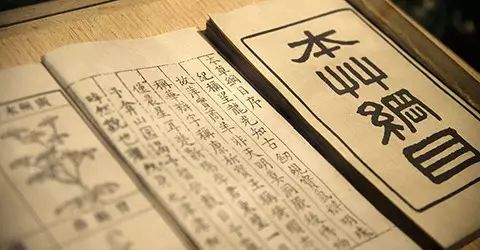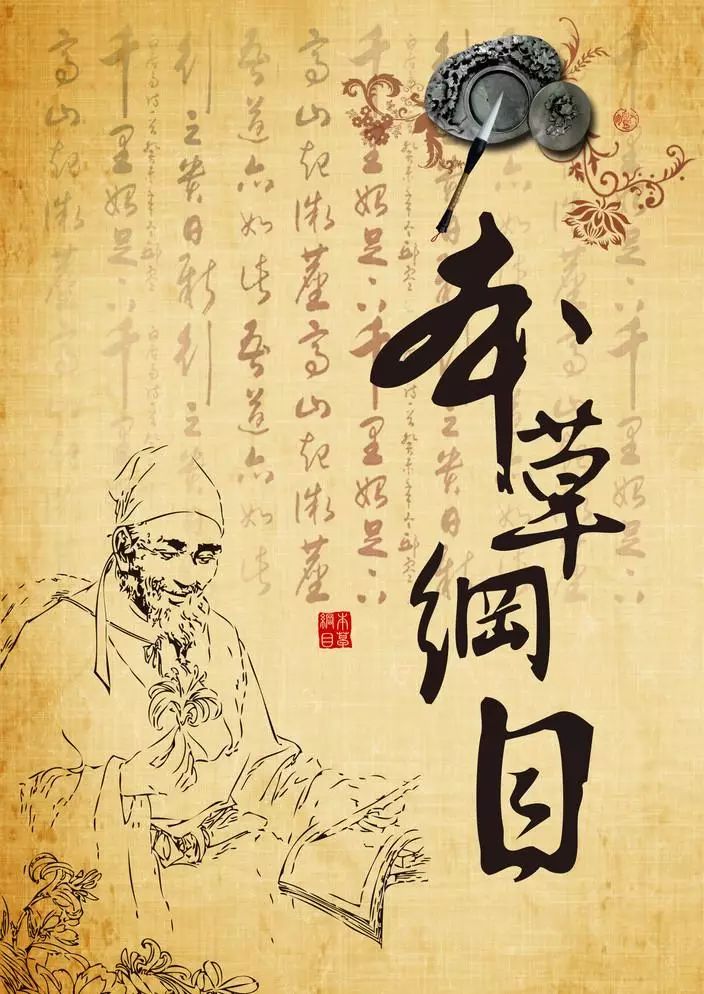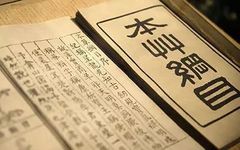 In the Ming Dynasty, the physician Li Shizhen spent nearly thirty years compiling the classic TCM text, the Ben Cao Gang Mu (Compendium of Materia Medica), which has been published for over 400 years and has received high acclaim from renowned scholars both domestically and internationally. However, it has recently faced criticism online due to certain content.
In the Ming Dynasty, the physician Li Shizhen spent nearly thirty years compiling the classic TCM text, the Ben Cao Gang Mu (Compendium of Materia Medica), which has been published for over 400 years and has received high acclaim from renowned scholars both domestically and internationally. However, it has recently faced criticism online due to certain content.
By reporters Huang Bei and Qin Yulong

Recently, NetEase News, while reprinting an article from the WeChat public account “Phoenix WEEKLY” titled “If I hadn’t read Ben Cao Gang Mu, I would have thought Li Shizhen was a doctor,” changed the title to “The Most Disturbing Medical Book in History: In Ben Cao Gang Mu, There is a Lot of Excrement and Blood,” using an exaggerated negative title to mock Ben Cao Gang Mu and attract attention, misleading readers. This has led to comments such as “Traditional Chinese Medicine (TCM) is no different from witchcraft” flooding the comment section.

“In the context of its time, Ben Cao Gang Mu is a comprehensive work that summarizes and scientifically classifies the effects and types of Chinese herbs, making it a monumental achievement in materia medica and a great medical work, which is beyond doubt,” stated Fang Yigong, chief physician at the Acupuncture Hospital of the China Academy of Chinese Medical Sciences. “Using ‘human parts’ and feces as medicine to attack Ben Cao Gang Mu and TCM is undoubtedly a misinterpretation, and it cannot deny the medical value of Ben Cao Gang Mu.”
Support for Ben Cao Gang Mu from TCM practitioners

“How many disgusting prescriptions are in Ben Cao Gang Mu?” “Ben Cao Gang Mu is a collection of jokes” “I can’t eat after reading Ben Cao Gang Mu because it’s so disturbing”… This is not the first time Ben Cao Gang Mu has been criticized; searching online with the keyword “Ben Cao Gang Mu” reveals many negative comments about it.
“The entire book of Ben Cao Gang Mu contains 1,892 types of medicinal substances, including 374 new additions, and records 11,096 prescriptions. It is a systematic summary of Chinese herbal medicine before the 16th century, correcting many previous errors and supplementing numerous new substances and prescriptions,” Fang Yigong said. “What is even more commendable is that for other substances and prescriptions that have not yet been widely recognized, Li Shizhen adopted the attitude of ‘all that has been used by people should not be neglected,’ preventing their loss.”
“Due to the historical context and the level of scientific technology at the time, Ben Cao Gang Mu does contain some outdated content, but this does not detract from its status as a great medical work,” said Wu Jiankun, head of the Pharmacy Department at Beijing Traditional Chinese Medicine Hospital, who also defended Ben Cao Gang Mu.
“Ben Cao Gang Mu records a wealth of experience in the use of medicinal substances, their properties, applications, and effects, providing detailed references for the identification and application of Chinese herbs. To this day, Ben Cao Gang Mu remains one of the most important references for practitioners of TCM in their learning and clinical activities.” said Zhang Bing, a doctoral supervisor at Beijing University of Chinese Medicine.
In addition to its achievements in medicine, Ben Cao Gang Mu has also made notable contributions in other fields. “Li Shizhen classified 1,892 medicinal substances into sixty categories, which is a very complex and detailed task. This classification is also a scientific breakthrough in taxonomy, representing a significant advancement in the classification of medicinal substances by predecessors,” Fang Yigong told reporters. Zhang Bing shares the same view, pointing out that Li Shizhen classified the recorded substances according to the evolutionary order of organisms, from inorganic to organic, from lower to higher, placing the highest beings, humans, as the last category, reflecting the idea of evolution.
Since its publication, Ben Cao Gang Mu has also received high praise from renowned scholars abroad. British biologist Darwin referred to it as the “ancient Chinese encyclopedia,” and it is also mentioned in the bibliography of his work on evolution. British expert in the history of Chinese science and technology Joseph Needham wrote in “Science and Civilisation in China”: “In the 16th century, China had two major works on natural medicine: one was the Ben Cao Pin Hui Jing Yao (Essentials of Materia Medica) from the early century, and the other was Ben Cao Gang Mu from the late century, both of which are very great works.”
Repeated Criticism: TCM is Unjustly Accused
Disputes over the disturbing nature of certain Chinese medicines have long existed online, and each time, the “fire” seems to burn TCM.

Poster for “The Legend of the Female Doctor Mingfei”
In 2016, the popular drama “The Legend of the Female Doctor Mingfei” featured the female lead using sparrow feces and chicken feces as medicine, which caused a huge uproar online. This February, the “Health Times” introduced the medicinal value of ten Chinese herbs, including Wu Ling Zhi (Flying Squirrel Feces), Ye Ming Sha (Night Bright Sand), and Wang Yue Sha (Moon Watching Sand), once again provoking ridicule from netizens, mocking TCM as ignorant and a relic of a backward era.
TCM experts argue that attacking TCM by citing “feces as medicine” is a very absurd act. On one hand, modern science has proven that fecal bacteria can aid in the treatment of certain diseases; on the other hand, feces are rarely used in modern TCM practice, and when they are, it is done in strict accordance with the Pharmacopoeia of the People’s Republic of China and with patient consent.
Fang Yigong pointed out that “Wu Ling Zhi” and “Bai Ding Xiang” (White Clove) are indeed recorded in ancient texts as fecal medicines. “Bai Ding Xiang” is made from sparrow feces and has effects such as resolving accumulation and clearing vision. It can treat various diseases such as hernias and eye disorders. These were summarized from medical practices of ancient times, and modern medical research has scientifically explained the rationale behind using feces as medicine, which actually demonstrates the foresight of TCM.
Modern scientific technology has conducted high-tech separation, disinfection, and rigorous evidence-based medical research on “feces as medicine.” In January 2013, the New England Journal of Medicine published a clinical research report on the use of fecal transplantation to treat stubborn diarrhea caused by Clostridium difficile, confirming the effectiveness of fecal microbiota transplantation. That same year, the American College of Gastroenterology (ACG) included fecal microbiota transplantation in its guidelines for treating recurrent Clostridium difficile infections. Mark Smith, a postdoctoral researcher at MIT, even founded a “fecal bank” to provide fecal samples for fecal microbiota transplantation surgeries for over a hundred hospitals in the United States.
Data shows that the commonly used thrombolytic drug urokinase is an enzyme protein isolated from the urine of healthy individuals, which acts quickly and effectively on newly formed blood clots and can also prevent clot formation. Urotoxin is a gonadotropin extracted from the urine of postmenopausal women, primarily containing follicle-stimulating hormone and luteinizing hormone, used to treat primary or secondary amenorrhea and infertility caused by insufficient gonadotropin secretion.
Refining and Preserving the Classics of TCM
The classics of TCM are the foundation of the TCM theoretical system and the core of TCM theory. Indeed, due to the cultural level, social environment, and limitations in understanding the world in ancient times, TCM classics also have some flaws. The ancient TCM that has been passed down for thousands of years must be refined. However, amplifying flaws infinitely and leading people to deny TCM is of no benefit to medical progress.
“The current editions of Ben Cao Gang Mu have removed many outdated contents from the original book, but some articles repeatedly hype these contents for sensationalism, which is irresponsible behavior,” said Xiao Li, a student at Beijing University of Chinese Medicine, who is also very angry.
“In the context of modern scientific knowledge and concepts, mocking the ancient people’s errors or limitations does not promote the advancement of today’s medicine and contradicts our original intention of ‘inheriting, promoting, organizing, and improving’ traditional medicine,” Fang Yigong said. “There are indeed some theoretical systems and treatment methods in TCM that current scientific and technological levels cannot explain, and we should approach them with a more cautious scientific attitude rather than belittling them and denying them outright.”
Wu Jiankun stated, “Medicine is progressive, and so is TCM. Just like the inheritance of traditional culture, we must ‘take the essence and discard the dross.’ We cannot deny the entire traditional culture of the Chinese nation because of the existence of dross.” She pointed out that the current standard for the clinical use of Chinese medicine is based on the Pharmacopoeia of the People’s Republic of China 2015 edition, which is the legal basis that should be followed for the research, production, operation, use, and supervision of drugs. All national drug standards should comply with the relevant requirements of the Chinese Pharmacopoeia and its appendices.
Professor Li Liukun from Beijing University of Chinese Medicine also believes that the inheritance and development of TCM classics like Ben Cao Gang Mu should not be hastily denied, mocked, or rejected, but should be viewed objectively, with a humble and cautious attitude towards research and verification.
“When dealing with traditional medicine, modern scientific technology and methods should be used to inherit, absorb, reference, and elevate the rich medical practice experience from traditional medicine,” Fang Yigong said. The “13th Five-Year Plan for the Development of Traditional Chinese Medicine” states that the integration of inheritance and innovation should run through all work in the development of TCM, correctly grasping the relationship between inheritance and innovation, adhering to original TCM thinking, and fully utilizing modern scientific technology and methods to promote the continuous development of TCM theory and practice. The discovery of artemisinin, the research on all-trans retinoic acid and arsenic trioxide inducing differentiation and apoptosis in acute promyelocytic leukemia, are all results of referencing and elevating traditional medicine, which have significant implications for the development of modern TCM.
Reporters Huang Bei and Qin Yulong
New Media Editor: Yang Difei
Content Cooperation: 010-84249009 ext. 6303
or add QQ 656944028
Business Cooperation: 18500879979
WeChat Submission Email:[email protected]
(The article focuses on viewpoints, policies, academic discussions, and TCM culture, and must be original for first publication. Please leave your name, organization, and contact information in the email.)
Copyright Statement:This article is original to China Traditional Chinese Medicine News (WeChat ID: cntcm1989) and may not be reproduced without authorization. Click the lower left corner “Read the Original” to obtain authorization.

